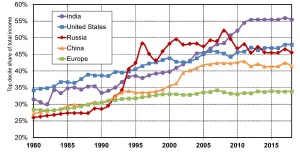Low abundance and diversity of seabirds and cetaceans in the Bay of Bengal
This blog is a little a-typical for the Sigur Nature Trust because it is about a paper on marine birds. Notice how fast the fisheries are crashing in the Bay of Bengal. It should prompt immediate better management. Apparently, it does not. Too bad for our food safety.
Seabirds are top predators and an important component of the marine food web, and their abundance and diversity can indicate the condition of marine fisheries, upon which millions of people depend. According to the Central Marine Fisheries Research Institute, marine fish catch from India declined 9% in 2018 compared to the previous year, mainly due to reduced catch in West Bengal, Karnataka and Maharashtra (https://www.financialexpress.com/market/commodities/marine-fish-catch-falls-9-in-2018/1642588).
There is paucity of data on sea bird and cetacean abundance and distribution in the Bay of Bengal Large Marine Ecosystem (BOBLME). To assess the abundance and diversity of these two taxa, which are critical for the functioning of marine ecosystems, a team led by Ravichandra Mondreti and David Gremillet carried out at-sea surveys within the Bay of Bengal from 2012 to 2014 (link to paper here). The surveys were conducted from 39 vessel-based observations where all seabirds and cetaceans were recorded over a linear distance of around 4,722 km. A total of 2,697 seabirds from 17 species and 1,441 cetaceans belonging to at least 8 species were recorded. Sooty Terns Onychoprion fuscatus (n = 2,282, 85% of all birds) and Wedge-tailed Shearwaters Ardenna pacifica (n = 327, 12%) predominated, whereas cetacean numbers were dominated by Spinner Dolphins Stenella longirostris (n = 772, 54% of all cetaceans) and Indo-Pacific Bottlenose Dolphins Tursiops aduncus (n = 533, 37%). Dolphins and Pacific Bottlenose Dolphins, accounting for 93% of cetacean sightings.
The abundance and diversity of both groups was low compared to other tropical areas. This could result from low ocean productivity caused by stratification in the Bay of Bengal, human impacts such as disturbance, overexploitation of marine resources and long line fisheries, where seabirds form a significant bycatch. There is also a paucity of breeding sites for pelagic seabirds. Therefore conservation efforts need to be stepped up in BOBLME to maintain the viability of marine ecosystem functioning.
P. Davidar

